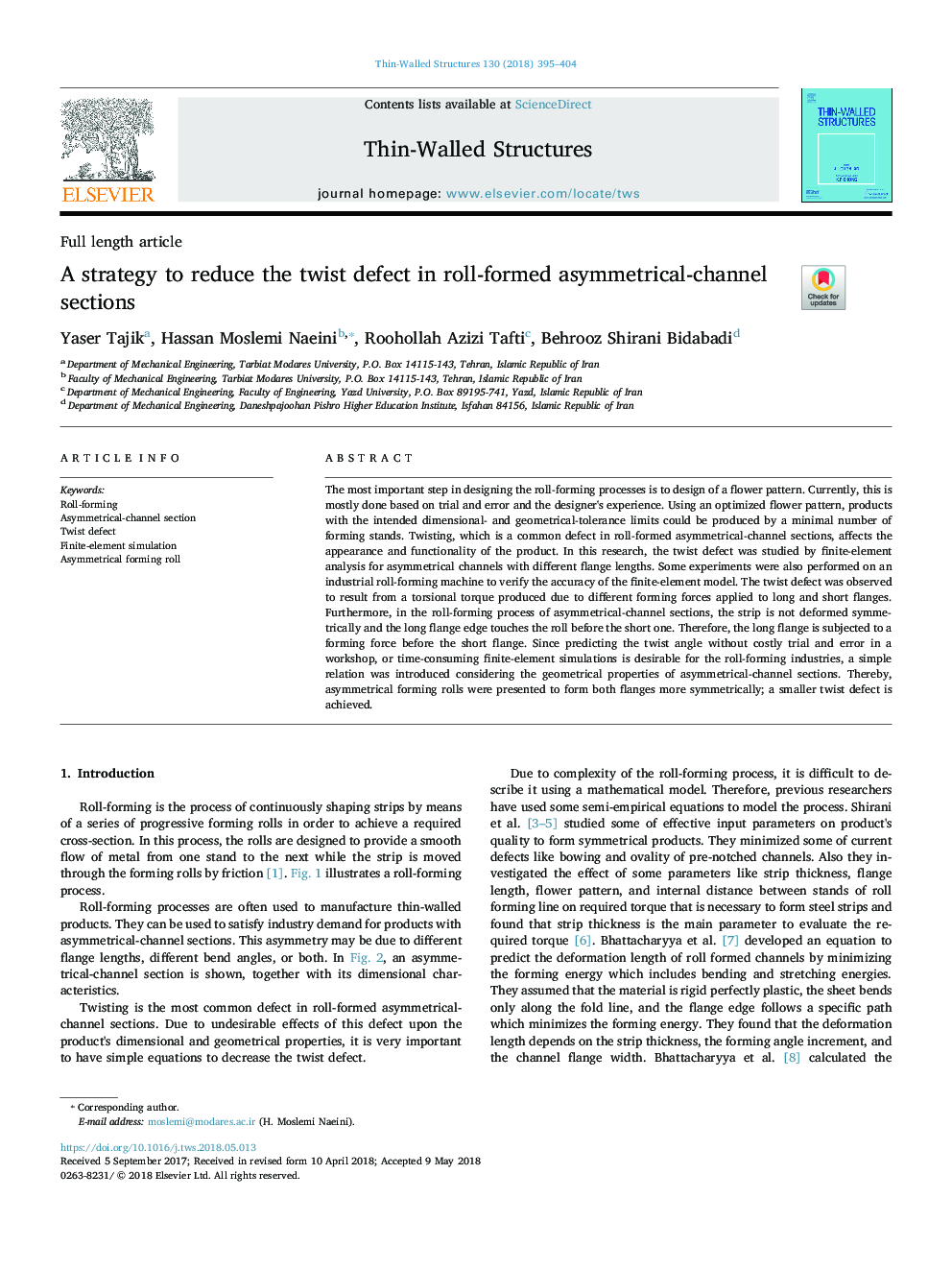| Article ID | Journal | Published Year | Pages | File Type |
|---|---|---|---|---|
| 6777312 | Thin-Walled Structures | 2018 | 10 Pages |
Abstract
The most important step in designing the roll-forming processes is to design of a flower pattern. Currently, this is mostly done based on trial and error and the designer's experience. Using an optimized flower pattern, products with the intended dimensional- and geometrical-tolerance limits could be produced by a minimal number of forming stands. Twisting, which is a common defect in roll-formed asymmetrical-channel sections, affects the appearance and functionality of the product. In this research, the twist defect was studied by finite-element analysis for asymmetrical channels with different flange lengths. Some experiments were also performed on an industrial roll-forming machine to verify the accuracy of the finite-element model. The twist defect was observed to result from a torsional torque produced due to different forming forces applied to long and short flanges. Furthermore, in the roll-forming process of asymmetrical-channel sections, the strip is not deformed symmetrically and the long flange edge touches the roll before the short one. Therefore, the long flange is subjected to a forming force before the short flange. Since predicting the twist angle without costly trial and error in a workshop, or time-consuming finite-element simulations is desirable for the roll-forming industries, a simple relation was introduced considering the geometrical properties of asymmetrical-channel sections. Thereby, asymmetrical forming rolls were presented to form both flanges more symmetrically; a smaller twist defect is achieved.
Related Topics
Physical Sciences and Engineering
Engineering
Civil and Structural Engineering
Authors
Yaser Tajik, Hassan Moslemi Naeini, Roohollah Azizi Tafti, Behrooz Shirani Bidabadi,
